#Wiener Werkstatte
Text

Anonymous. Gustav Klimt, Emilie und Helene Flöge, Litzlberg at Attersee, Austria, 1906 | src Ostlicht
"This private photograph is captivating because of the contrast between the different silhouettes of the three figures, which reveals the emancipatory radicalism of the reform dress. Implicitly, as one might say, this also "quotes" the design element of repeated curved lines, as found in many of Gustav Klimt's compositions."
read more on wordPress
#gustav klimt#emilie flöge#helene flöge#schwestern flöge#emilie floge#vintage photography#vintage photo#family photos#1900s#attersee#lake#jetty#waterscape#dock#wiener werkstaette#Wiener Werkstätte#Wiener Werkstatte#Wiener Werkstaette#Vienna Secession#1900s fashion
264 notes
·
View notes
Photo

Collection of textile swatches made by Wiener Werkstatte
330 notes
·
View notes
Text


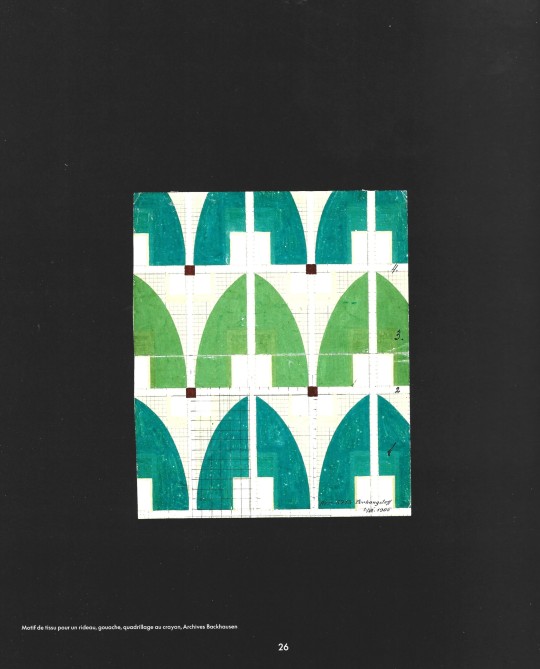

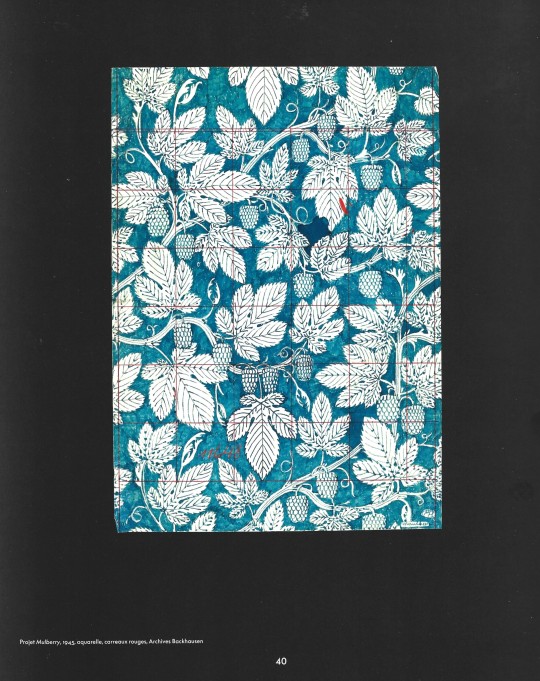



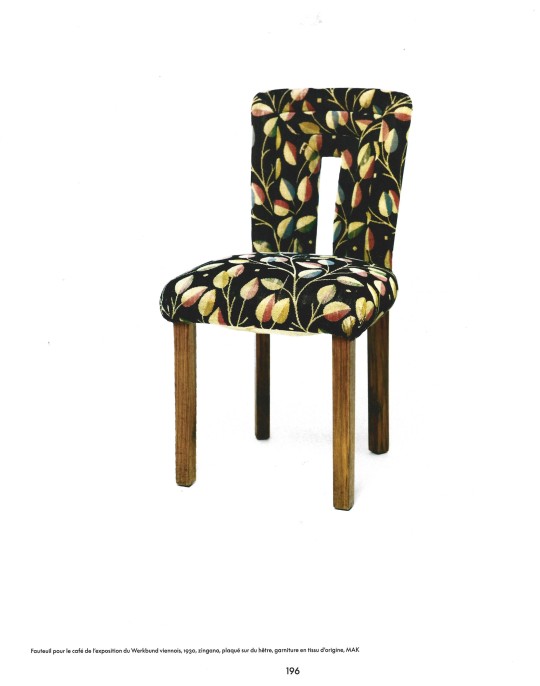
Josef Hoffmann
Sous le charme de la beauté
Adrián Prieto, Christian Witt-Dörring
Hannibal, Veurne 2023, 208 pages, Hardcover,24,5x28cm, French Edition, ISBN 978 94 6466 668 7
euro 60,00
email if you want to buy [email protected]
Innovative introduction to the iconic work of architect and designer Josef Hoffmann
The Viennese architect and 'all-round designer' Josef Hoffmann (1870–1956) is so much more than the founder of the Wiener Werkstätte. This book offers a broad view of his oeuvre that developed over no less than sixty years. The timeless beauty of Hoffmann's creations shows not only his importance as a historical figure, but also as a source of inspiration for several generations.
Richly illustrated with furniture, objects, designs, textiles, photographs, drawings and documents. Special attention is paid to his creative working method and his misunderstood use of color.
This monograph is published on the occasion of the exhibition Josef Hoffmann – Under the spell of beauty, which will take place from October 6, 2023 to April 14, 2024 in the Brussels Museum of Art & History. The project was created in collaboration with the Museum für angewandte Kunst (MAK) in Vienna and is one of the eye-catchers of the Art Nouveau Year 2023 in Brussels.
13/11/23
#Josef Hoffmann#architect and designer#Brussels Museum of Art 2024#viennese architect#Wiener Werkstatte#furnitures#textiles#objects#drawings#designbooksmilano#fashionbooksmilano
16 notes
·
View notes
Text
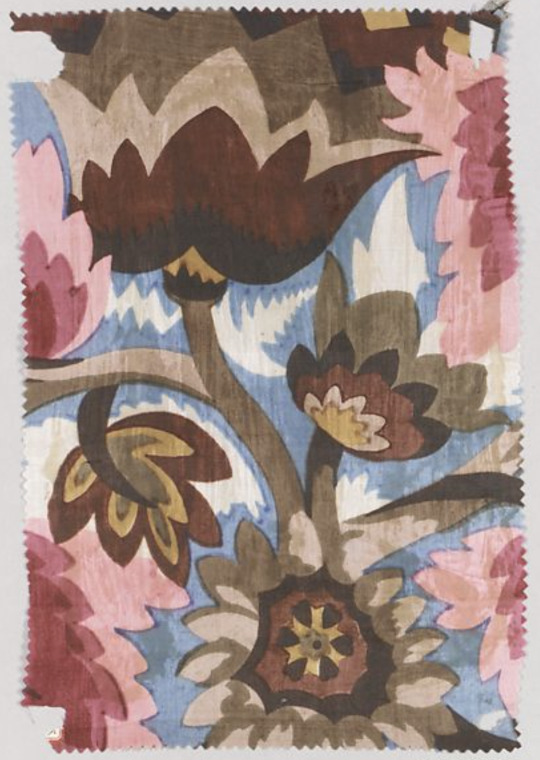
8 notes
·
View notes
Text
Dagobert Peche: Master of Ornament from the Arts and Crafts Movement to Art Deco
“Dagobert Peche was the greatest ornamental genius Austria has produced since the Baroque.” - Josef Hoffmann
Dagobert Peche was one of the most influential designers of the Wiener Werkstätte. (1) His work falls under the Arts and Crafts Movement and was extremely influential to the burgeoning Art Deco style. A very versatile designer, “Peche has been credited with ushering in a new era for the decorative arts” (2). “Peche designed across numerous media including wallpaper, textiles, furniture, glass, jewelry, toys, and metalwork” (1) and is also renown for his graphic designs. (1)
Dagobert Peche was “born April 3, 1887 in Lungau, Austria” (2). As a boy he aspired to become a painter, but his older brother was a painter so young Dagobert decided to become an architect. (3) Peche began his studies in engineering and architecture at “Technische Hochschule (Technical College) in Vienna” (4) in 1906. He studied under Max von Ferstel, Karl König, and Leopold Simony. (2) Two years later Peche left Technische Hochschule to enroll in “Akademie der bildenden Künste in Vienna (Academy of Fine Arts), where the architect Friedrich Ohmann was his main influence” (2).
In 1910 Peche journeyed to Great Britain where he was influenced by the art and design he saw there; Aubrey Beardsley’s work may have had a profound influence on the young designer. In 1911 Peche graduated from the Academy of Fine Arts and also married his love Petronella (Nelly) Daberkow whom he had met the previous year. (2)

Dagobert Peche, Brooch (C. 1917) Image source.
Another momentous encounter in Peche’s life happened when he met architect and designer Josef Hoffmann at a celebration held in honor of architect Otto Wagner’s 70th birthday. (3) Hoffmann began buying Peche’s textile and wallpaper designs for the Wiener Werkstätte. During this time Peche brached out in other areas of design “contributing designs for furniture, glass, jewelry, and toys” (2). His graphic designs for “postcards…invitation cards, bookplates, and posters” were popular as well. Many of his designs featured “a touch of the [Baroque and] Rococo style, and carry a playful erotic charge. Peche also designed woodcuts, which were included in the fashion portfolio Mode Wien 1914/15” (2).
Peche officially joined Wiener Werkstätte in 1915, “eventually becoming co-director between 1917 and 1923” (4). He also served as “Zurich branch of the Wiener Werkstätte until 1919” (1). “Peche “was drafted to serve in the war in 1916, but was released in 1917 after suffering from appendicitis” (2).

Dagobert Peche, Poster for Wiener Werkstätte fashions (1919) Image source.
During World War I, material shortages forced Peche to experiment with “simple materials like tole and cardboard” (4). A design strategy that would become more common during and after the Second World War for designers like Jean Prouvé and Jens Risom.
Peche did not design exclusively for Wiener Werkstätte. He also developed “textiles and carpets for Johann Backhausen, & Söhne, ceramics for Vereinigte Wiener & Gmundner Keramik, … and wallpaper for Max Schmidt and Flammersheim & Steinmann” (1).
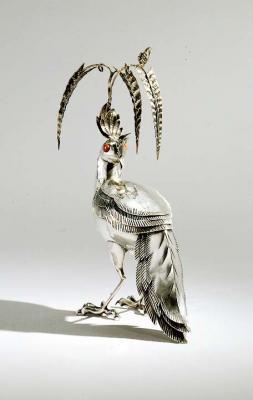
Dagobert Peche, Silver Bird-shaped Candy Box (1920). Image source.
Sadly, Peche’s brilliant career was cut short when he died of cancer in Vienna on April 16, 1923 at the age of 35. (2) While Peche’s work slightly pre-dates the Art-Deco period his geometrically stylized designs were a major influence on designers like René Lalique, Emile-Jacques Ruhlmann, and Jean Dunand.

Dagobert Peche, Large Leaves design for fabric (c. 1920). Image source.
#Dagobert Peche#industrial design#graphic design#arts and crafts movement#art deco#Wiener Werkstatte
0 notes
Text

Postcard of Wiener Werkstatte
'Nikolo and Krampus' by Jozef Diveky, (1887 - 1951)
578 notes
·
View notes
Text

Postcard of Wiener Werkstatte
'Nikolo and Krampus' by Jozef Diveky, (1887 - 1951)
10 notes
·
View notes
Photo
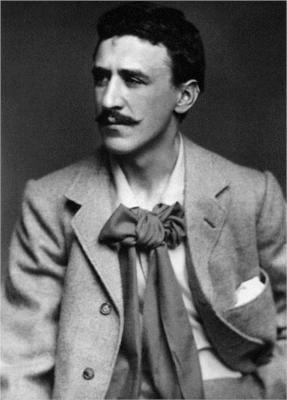




The Scottish architect and designer Charles Rennie Mackintosh died on Monday 10th December 1928, with a pencil in his hand.
As the visionary architect responsible for its re-design and re-build, Mackintosh not only transformed The Glasgow School of Art into world-renowned academy, but also put Scotland firmly on the map as a center of creativity and hub for art and design.
Charles Rennie Mackintosh was born in Glasgow on 7th June 1868, the 4th child of a policeman, William, and his wife, Margaret Rennie. There were eventually 11 children born to the couple, though 4 of them died whilst still young. He was born with a contracted sinew in one foot, which made him limp as he grew older.
He first went to school at the age of 7 and after 2 years transferred to a private school for the children of artisans. He seems to have been fairly poor at traditional ‘reading, writing and arithmetic’, and suffered from dyslexia, leading to poor spelling, for which he became known in later life. He is thought however to have been good at art from an early stage.
While generally associated with the art nouveau style, Mackintosh rejected such comparisons and did not feel part of the 19th-century art nouveau European style represented by Guimard, Horta, van der Velde, or Gaudi, and little of their sinuous "whiplash" curvilinear expression is to be seen in Mackintosh's work. He sought to unite natural forms, especially those deriving from plants and flowers, with a new architectural and design vocabulary that set him well apart from the mainstream of architects who looked to Greece, Rome, and Egypt for inspiration from the antique. His marriage to a talented artist-designer, Margaret Macdonald (1864-1933), and the marriage of her sister, Frances, to Mackintosh's close friend Herbert McNair led to the formation of a brilliantly creative group, clearly led by Mackintosh, known variously as "The Four" or "The Spook School."
Considerable attention was focussed on the work of Mackintosh and the "Glasgow Style" artists and designers who had come from the School of Art. In 1900 Mackintosh and his friends were invited to create a room complete with furnishings at the Vienna Secession exhibition. This created huge interest, and the Mackintoshes were lionized when they went to Vienna. Their exhibition display had a direct influence on the development of the Wiener Werkstatte formed shortly thereafter by Josef Hoffmann. Hoffmann and Mackintosh were close friends, and Hoffmann visited Glasgow twice to see Mackintosh's work, as did the influential critic Hermann Muthesius and the Werkstatte's patron, Fritz Wärndorfer. "The Four" exhibited widely in Europe, both together and individually, and Mackintosh received commissions for furniture from patrons in Berlin, Vienna, and elsewhere in Europe.
In Glasgow Mackintosh's greatest public exposure was through the creation of a number of restaurants, the tea rooms of his most enduring patron, Kate Cranston. The tea rooms provided a wonderful opportunity for Mackintosh to put into practice his belief that the architect was responsible for every aspect of the commissioned work. At The Willow Tea Room (1903) he converted an existing interior into a remarkable dramatic and elegant series of contrasting interiors with furniture, carpet, wall decor, light fittings, menu, flower vases, cutlery, and waitresses' wear all designed by Mackintosh to create a harmonious whole, implementing the idea of totally integrated art-architecture. It is said that Mackintosh used to go to the Room de Luxe at The Willow just before it opened for morning coffee to arrange the flowers and ensure the perfection of his creation!
Surprisingly, despite Mackintosh's fame in Europe and the numerous articles in, for example, The Studio magazine devoted to his work, he never became a dominant force in Glasgow architecture. He created the private house Windyhill in 1901, a number of tea rooms, many works of decorative art and furniture, and other architectural conversions but never had the opportunity to create a second masterpiece after the School of Art and in the manner of Hoffmann's success with the Palais Stoclet in Brussels (1905) which owes so much to Mackintosh's influence. The dramatic designs for the huge International Exhibition in Glasgow in 1901 were rejected as too radical, and his entries for other competitions—for example, Liverpool Cathedral—were unsuccessful. His direct influence on European architecture came not by examples but by suggestions, notably the distribution of a full-color lithographic portfolio of "Designs for the House of an Art-Lover", which was never built.
The Hill House of 1902 is the best example of Mackintosh's domestic architectural style and interior and has survived virtually intact. The Mackintoshes' own house, complete with its furnishings, has been brilliantly recreated at the Hunterian Art Gallery, University of Glasgow , while his Glasgow School of Art has undergone extensive restoration of its interiors and collection
Mackintosh left Glasgow in 1915 for reasons never exactly clear but associated with a notable lack of commissions and the general building slump occasioned by the onset of World War I. He moved to England and journeyed to France and created a sumptuous series of watercolors of the landscape and flowers. Opportunities for a stylized series of flower forms to become widely-distributed printed textiles failed to materialize.
The famous flowing white-on-white interiors of the Glasgow period were replaced by geometric black-on-black interiors which clearly anticipated Art Deco in his final architectural commissions: 78 Derngate, Northampton, England, in 1915/1916, and the "Dug-Out" additions to the Willow Tea Room in Glasgow.
Mackintosh was a visionary designer and architect who had a professional influence on the development of the Modern movement. Although prolific during the height of his most creative years, 1896-1916, much of his work has been lost and the remainder is essentially confined to the city of Glasgow and surrounding region. Although completely neglected and largely ignored in the middle decades of this century, he has now been the subject of intense scrutiny and rediscovery.
His furniture and textile designs are being produced with notable success, and in 1979 a writing desk he designed in 1901 for his own use reached the then world record price paid at auction for any piece of 20th-century furniture, £89,200.
Now much admired and copied, he is seen as a central figure in the development of integrated art-architecture at the turn of the century and a seminal influence on many architects and designers of the Post Modern movement in the 1970s and 1980s.
Charles Rennie Mackintosh died in distressed circumstances in London on this day in 1928. Mackintosh sadly lost his power of speech and reportedly died holding a pencil in his hand
. . There was a small ceremony at Golders Green crematorium, and while there was no notice in the Scottish press, The Times of London did appropriately acknowledge that "the whole modern movement in Europe looks to him as one of its chief originators."
An obituary did howver appear in the Glasgow Herald on December 15, it was a sloppy peice, they couldn’t even get where he passed away correct, nor the age of Mackintosh, but it does give an insight into the contemporary view of his talent.
20 notes
·
View notes
Text
Mela Kohler, Fashion Drawings, c. 1907

Fashion drawings, three illustrated postcards of the Wiener Werkstatte, c. 1907.
"The Wiener Werkstatte managed to mix all the manifestations of existence through artistic means. Meal tables, floral arrangements and even fashion sketches -- such as Van de Velde's -- all were integrated in one unique symmetry."
Scanned and quoted from the book "Art Nouveau" by Gabriele Fahr-Becker.
2 notes
·
View notes
Text

Plakatentwurf von Nelly Marmorek (1877 – 1944); Cornelia Nelly Marmorek (née Schwarz)
Die Fläche : Entwürfe für decorative Malerei, Placate, Buch- und Druckausstattung | src ÖNB
view & read more on wordPress
#Nelly Marmorek#Wiener Werkstaette#Jugendstil#women artists#Munich Secession#Wiener Werkstätte#Art Nouveau#Vienna Secession#Stile Liberty#Modernisme Català#1900s#die flache#die fläche#Nelly Schwarz#wiener werkstatte#women in the arts
260 notes
·
View notes
Photo

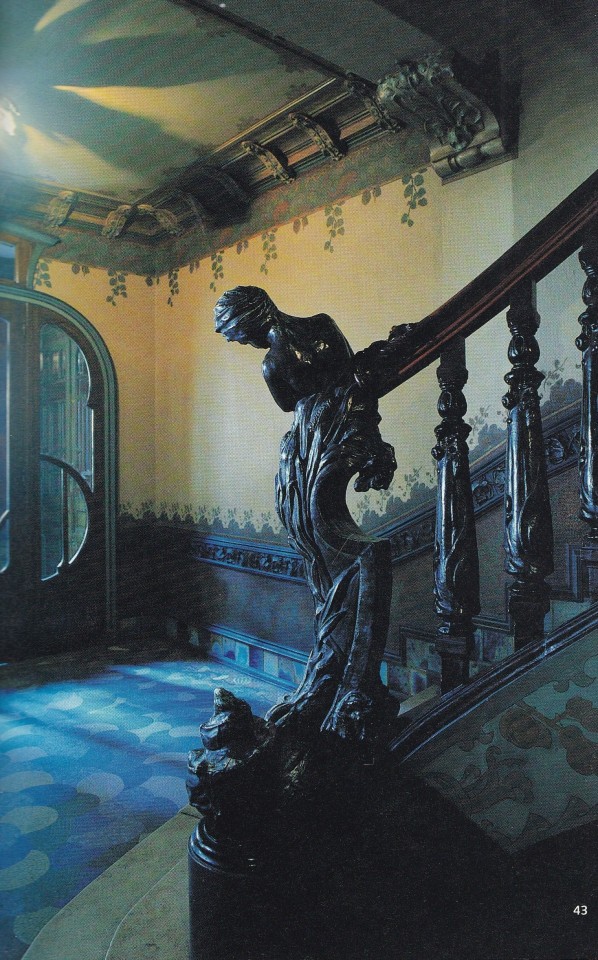



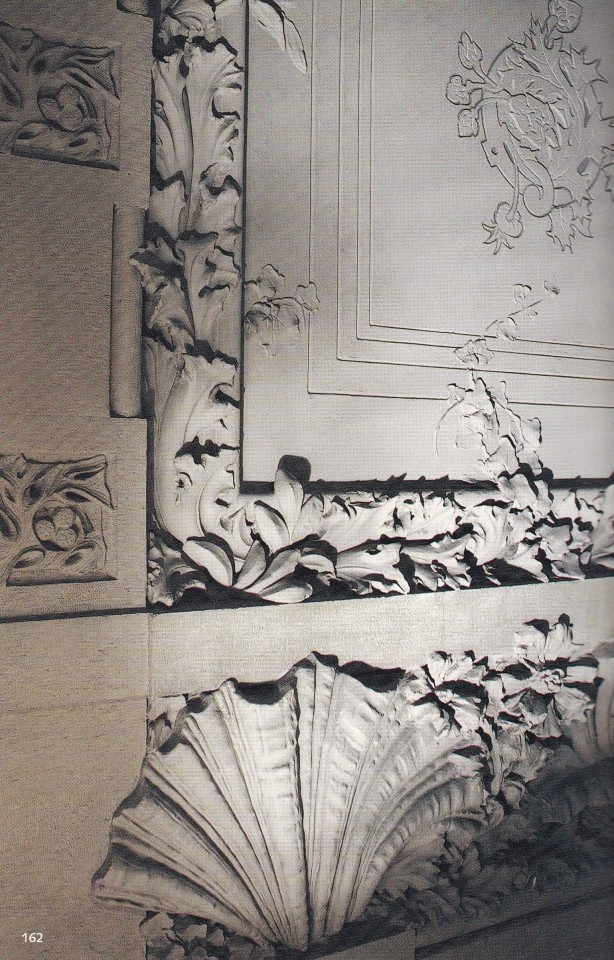




Art Nouveau
Keiichi Tahara
Philippe Thiébaut, Bruno Girveau
Editions Assouline, Paris 2000, 399 pages, 15 x 21 x 4, ISBN 978-2843231933
euro 50,00
email if you want to buy [email protected]
Au cours du dernier tiers du XIXe siècle, l'Europe connut un profond renouvellement du paysage urbain de ses capitales et du cadre de vie de ses habitants. Architectes et décorateurs étaient animés du désir de faire table rase des formules pastichant les styles historiques et de créer un environnement qui satisfasse les exigences de la vie contemporaine et les besoins de " l'homme moderne ". De cette quête de formes fonctionnelles et inédites est né l'Art nouveau. Bien que son existence ait été de brève durée (1895-1910) et bon nombre de ses créations volontairement détruites, il demeure encore des témoignages à travers l'Europe de son étonnante vitalité, de sa poursuite d'un idéal organique, qu'il s'agisse de recherches individuelles (Horta, Guimard, Gaudi) ou collectives (Ecole de Glasgow, Wiener Werkstätte). Cet ouvrage les présente, saisis par l'objectif de Keiichi Tahara, dans la diversité de leur langage plastique et formel, combinant de manière unique rationalisme et onirisme.
14/05/23
orders to: [email protected]
ordini a: [email protected]
twitter: fashionbooksmilano
instagram: fashionbooksmilano, designbooksmilano tumblr: fashionbooksmilano, designbooksmilano
#Art Nouveau#Keiichi Tahara#photography books#Otto Wagner#Victor Horta#Hector Guimard#1895.1910#Gaudi#Wiener Werkstatte#art books#fashionbooksmilano
28 notes
·
View notes
Text

Bag
Artist/Maker:
attributed to: Maria Likarz-Strauss (1893-1971)
attributed to: Wiener Werkstatte, Design House
Geography:
Austria; Vienna
Materials:
glass bead; silk; cotton
George Washington University
26 notes
·
View notes



